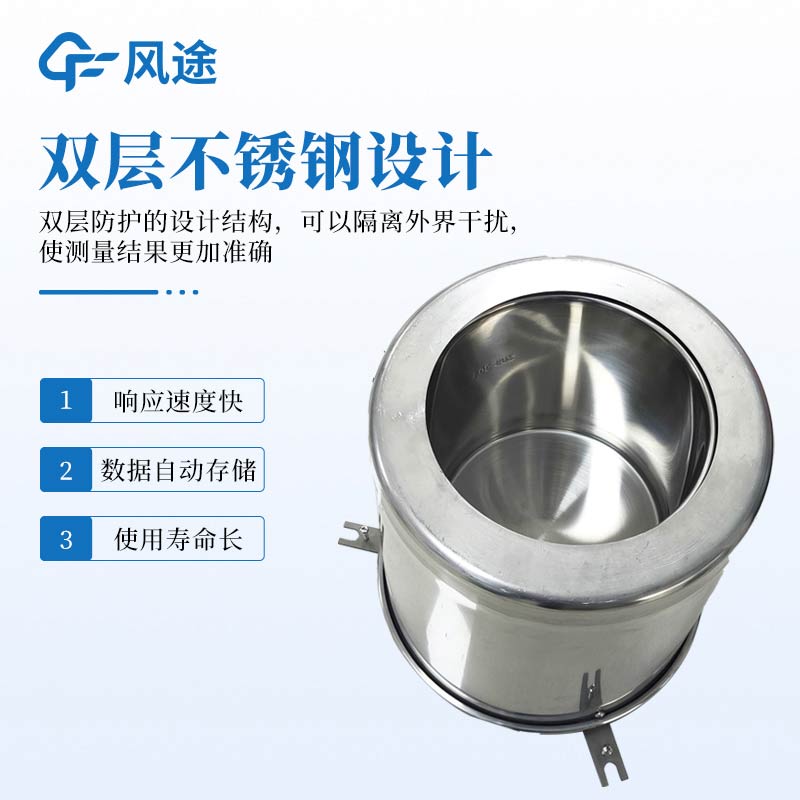Shandong Fengtu IOT Technology Co., Ltd
Sales Manager:Ms. Emily Wang
Cel,Whatsapp,Wechat:+86 15898932201
Email:info@fengtutec.com
Add:No. 155 Optoelectronic Industry Accelerator, Gaoxin District, Weifang, Shandong, China

Sales Manager:Ms. Emily Wang
Cel,Whatsapp,Wechat:+86 15898932201
Email:info@fengtutec.com
Add:No. 155 Optoelectronic Industry Accelerator, Gaoxin District, Weifang, Shandong, China
time:2024-07-22 08:35:57 source:Weather Station viewed:423 time
Surface evaporation is the process by which a body of water releases water to the atmosphere through evaporation and is usually measured in millimeters of evaporation per day (mm/d). For example, annual evaporation may reach 980 mm, while monthly evaporation in June is 125 mm. Factors that affect the rate of evaporation include air humidity, wind speed, air temperature, and the size of the water body.
It is important to note that evaporation rates measured by evaporators are usually higher than those of natural water bodies. This is due to the differences in the dynamic and thermal conditions of the evaporator and its surroundings compared to natural water bodies. In order to more accurately reflect evaporation from the actual water body, the observed values from the evaporator need to be multiplied by a discount factor.
In hydraulic engineering, it is critical to have accurate data on water surface evaporation. These data help us to understand the water loss from water bodies such as lakes and reservoirs, and also play a key role in predicting and calculating water demand for irrigated agriculture, especially rice cultivation. Using this information, water resources can be assessed and allocated more accurately, thus optimizing the efficiency of water use and ensuring sustainable management of agricultural production and water resources.
The FT-ZF1 Weighing Water Surface Evaporator utilizes the principle of pressure-based measurement to calculate evaporation by monitoring the change in weight of the liquid in the evaporating dish. This sensor is not affected by the environment such as icing, has high measurement accuracy and fast response speed, and is suitable for many fields such as meteorological observation, agriculture, forestry and geological survey. It can not only be used in conjunction with automatic water filling devices and data acquisition equipment to realize automatic monitoring and data storage, but also can be combined with rainfall sensors and other equipment for automatic observation and remote transmission of evaporation and rainfall.
The sensor is made of 304 stainless steel, which is corrosion-resistant and rust-free, ensuring the long-term use of the equipment. Its double-layer protection design structure effectively isolates external interference and improves the accuracy of measurement. In addition, even in the event of a power outage, the sensor can continue to provide accurate data output after power is restored.

When it comes to the advantages of water quality sensors, they can be summarized in six words: real - time, continuous, and automatic.Since the sensors can be directly deployed in water bodies (such as rivers, sewage treatment plants, water supply pipe networks, etc.), they collect water quality par...
In today's society, dust pollution has become a major problem affecting environmental quality and people's living health. It not only deteriorates air quality but also endangers everyone's respiratory health, and may even trigger a series of environmental protection issues and regulatory...
Oilseed rape is an important cash crop in the south. Using agricultural meteorological observation data, we can count the important meteorological elements affecting the growth of oilseed rape, mainly including light, precipitation and temperature, etc. Through trend prediction of climate, we can re...
tool that measures wind speed is an anemometer, an instrument commonly used in weather stations to accurately measure wind speed and direction....